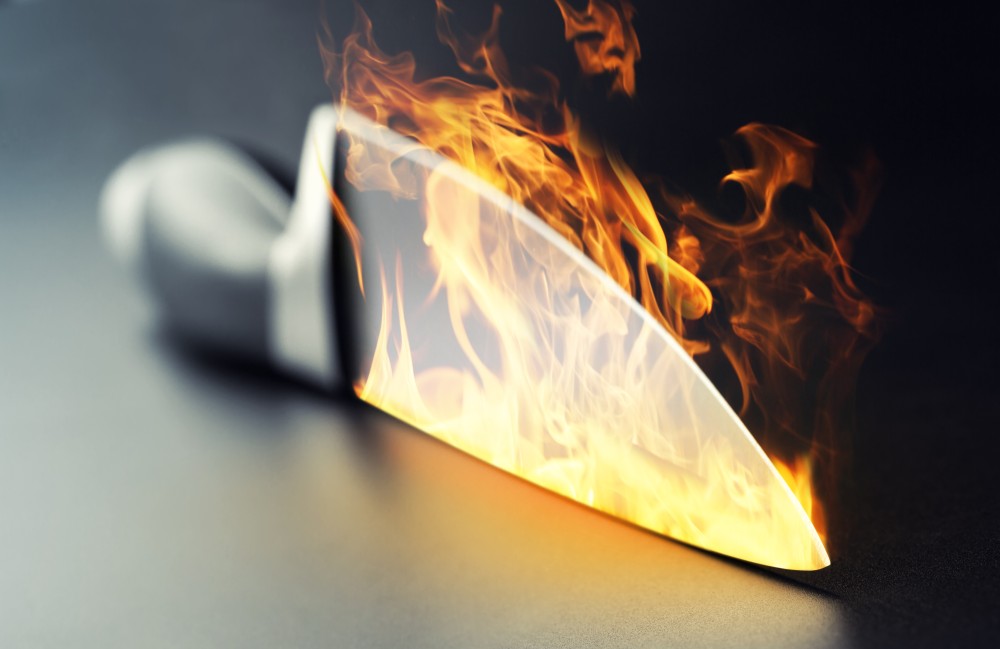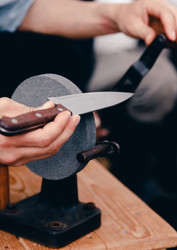How To Sharpen And Maintain Your Knife Investment
25th Jun 2019

Keeping a sharp edge on your knives is extremely important. Compensating for a dull blade by adding additional force can be dangerous to you and do damage to your blade. Believe it or not, a sharp knife is a safer knife. When properly sharp a knife should do much of the work for you with simple guidance by the cutting hand- not brute force. There are multiple ways to keep your knives sharp: using a whetstone, small electric sharpener or a steel honing rod.
Let's start by understanding the difference between the terms honing and sharpening. Honing take off burrs and knicks and helps to realign the microscopic serrations in the blade, but doesn’t actually create a new edge. Honing can be done frequently, even after each use. Sharpening on the other hand actually shaves a small amount of steel off the blade edge thus creating a newly fresh and keen edge. Depending on how often you use your knife, it may only need sharpening every few weeks or as little as a few times per year.
It is important to regularly hone your knife and inspect it for the need of sharpening. If you take care of your blade it will last longer and take care of you. So why not sharpen the blade often if it is so good to do? Each time a knife is sharpened it takes off a small amount of steel from the blade edge. An knife that gets over sharpened will eventually lose its intended, original blade shape which can make it less effective for basic tasks.
Here's a little tip, if you can, use a sharpener that is recommended by the manufacturer of the knife you own. Steel hardness varies widely from model to model and maker to maker, which can make some sharpening tools less effective than others. In order to properly sharpen, you will need something harder or at a higher Rockwell degree than your knife. Many stainless-steel knives are 52-58 RC, while high carbon can be 45-55. There is even more variation today with the invention of new alloys so take care to read any instructions that come with your knife. Just because you could sharpen that Boy Scout knife 20 years ago, doesn't mean you can properly do it now.
Like anything that has the potential to be dangerous when misused- ALWAYS remember to exercise safety!
1. Always cut/sharpen with the edge facing away from your body and never toward it.
2. If the knife falls out of your hand, let it fall. Never attempt to catch a falling knife.
3. Unless you have some training, a safe area to practice and a specialized knife for throwing, never toss a knife.
4. Don't run with a knife in your hand or with the point facing another person or yourself.
5. Keep knives away from children.
6. Maintain often and sharpen when needed. Sharp knives are safer than a dull one because it requires less pressure to cut.
7. Never use the tip of a knife to pry unless the blade was designed for that.
8. Never run your fingers along the edge of the blade to "test" the sharpness of the blade.
There is more to be sure, but this will get you started. Our experts will be happy to help you with questions about this topic and of course help you pick out the perfect knife!


 Gift Cards
Gift Cards